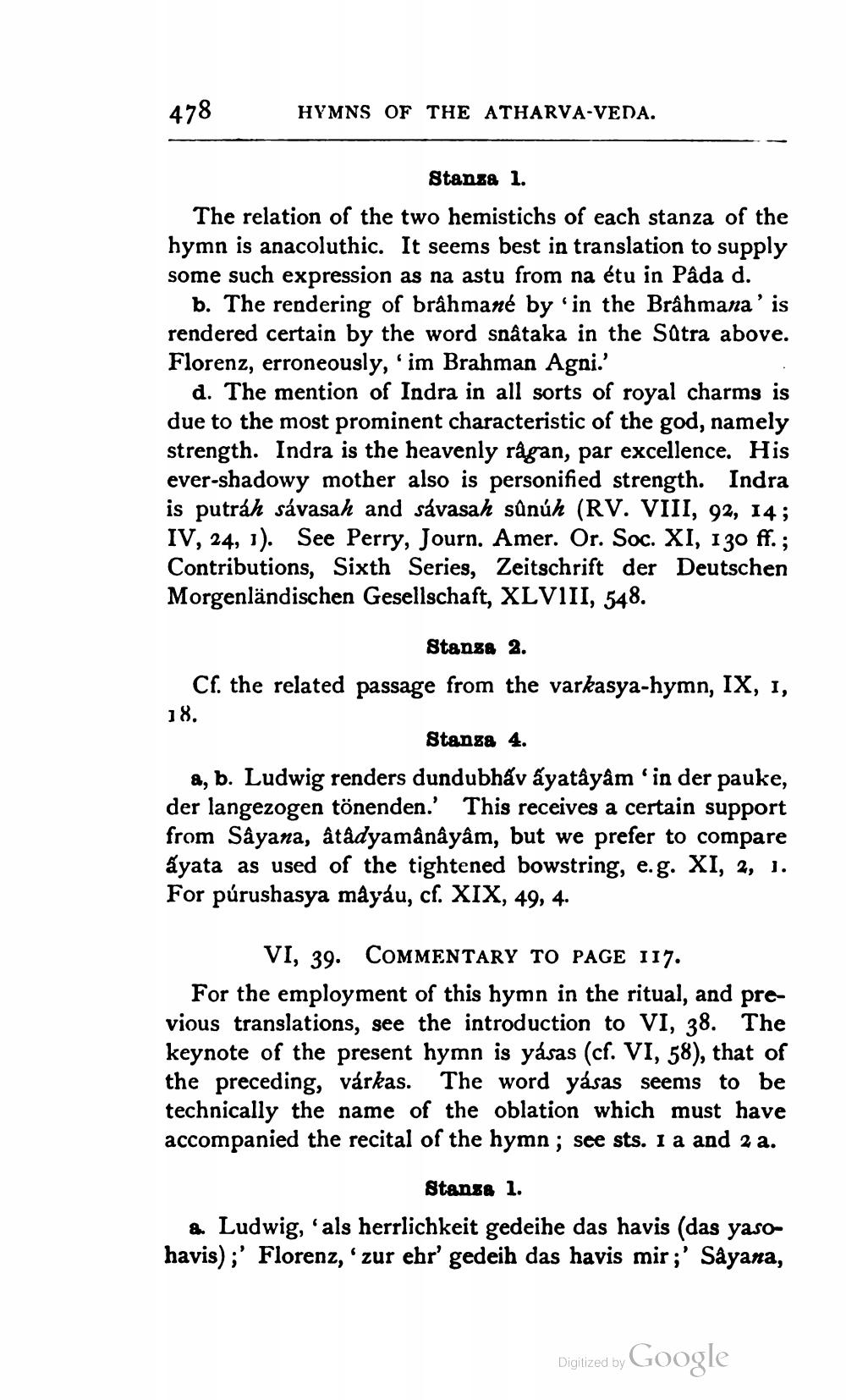________________
478
HYMNS OF THE ATHARVA-VEDA.
Stanza 1.
The relation of the two hemistichs of each stanza of the hymn is anacoluthic. It seems best in translation to supply some such expression as na astu from na étu in Pâda d.
b. The rendering of brâhmané by 'in the Brahmana' is rendered certain by the word snâtaka in the Sutra above. Florenz, erroneously, 'im Brahman Agni.'
d. The mention of Indra in all sorts of royal charms is due to the most prominent characteristic of the god, namely strength. Indra is the heavenly rågan, par excellence. His ever-shadowy mother also is personified strength. Indra is putráh sávasah and sávasah sûnúh (RV. VIII, 92, 14; IV, 24, 1). See Perry, Journ. Amer. Or. Soc. XI, 130 ff.; Contributions, Sixth Series, Zeitschrift der Deutschen Morgenländischen Gesellschaft, XLVIII, 548.
Stanza 2.
Cf. the related passage from the varkasya-hymn, IX, 1,
18.
Stanza 4.
a, b. Ludwig renders dundubhav ấyatâyâm 'in der pauke, der langezogen tönenden.' This receives a certain support from Sâyana, âtâdyamânâyâm, but we prefer to compare ayata as used of the tightened bowstring, e.g. XI, 2, 1. For púrushasya mâyáu, cf. XIX, 49, 4.
VI, 39. COMMENTARY TO PAGE 117.
For the employment of this hymn in the ritual, and previous translations, see the introduction to VI, 38. The keynote of the present hymn is yásas (cf. VI, 58), that of the preceding, várkas. The word yásas seems to be technically the name of the oblation which must have accompanied the recital of the hymn; see sts. I a and 2 a.
Stanza 1.
& Ludwig, 'als herrlichkeit gedeihe das havis (das yasohavis);' Florenz, 'zur ehr' gedeih das havis mir;' Sâyana,
Digitized by
Google




